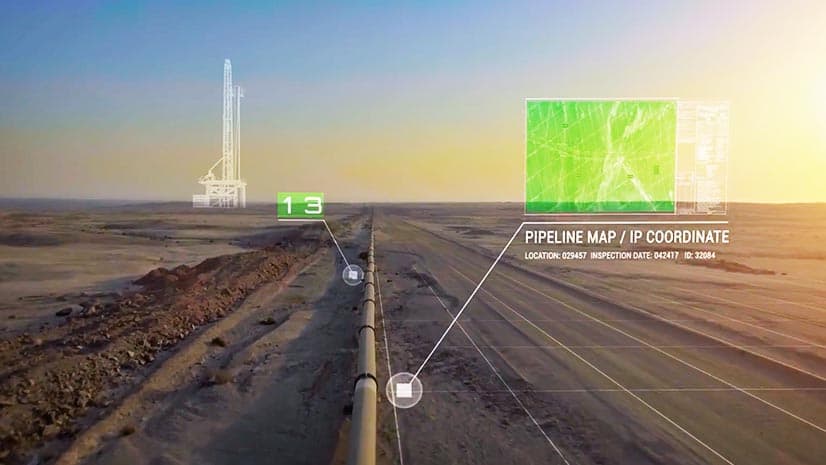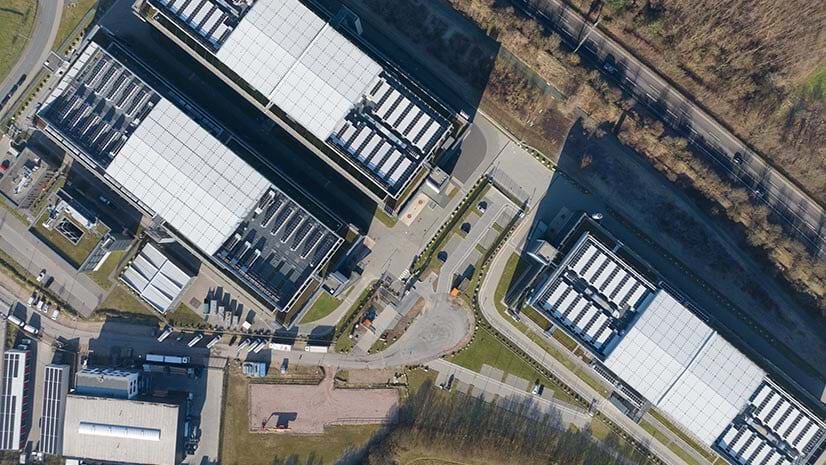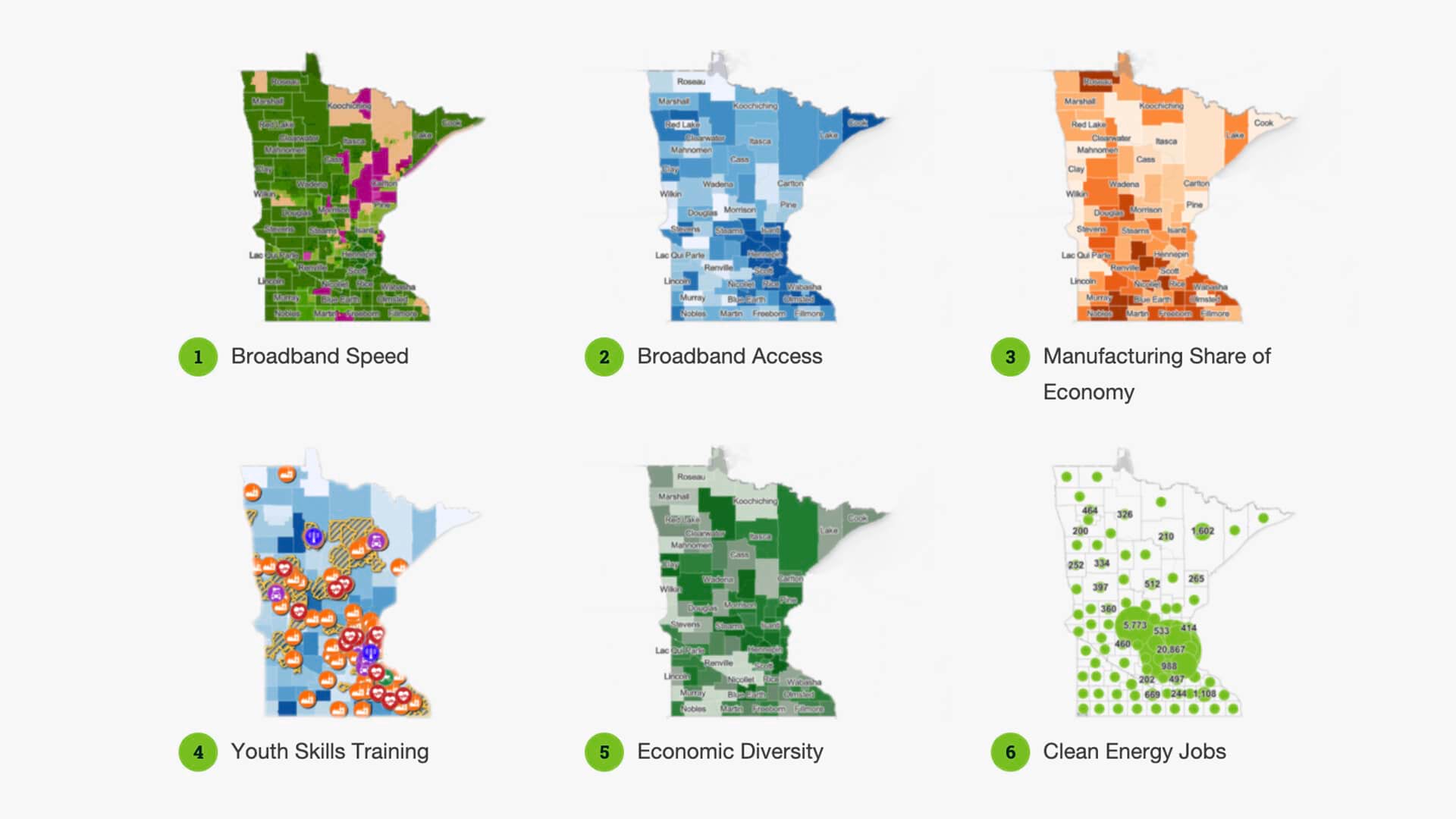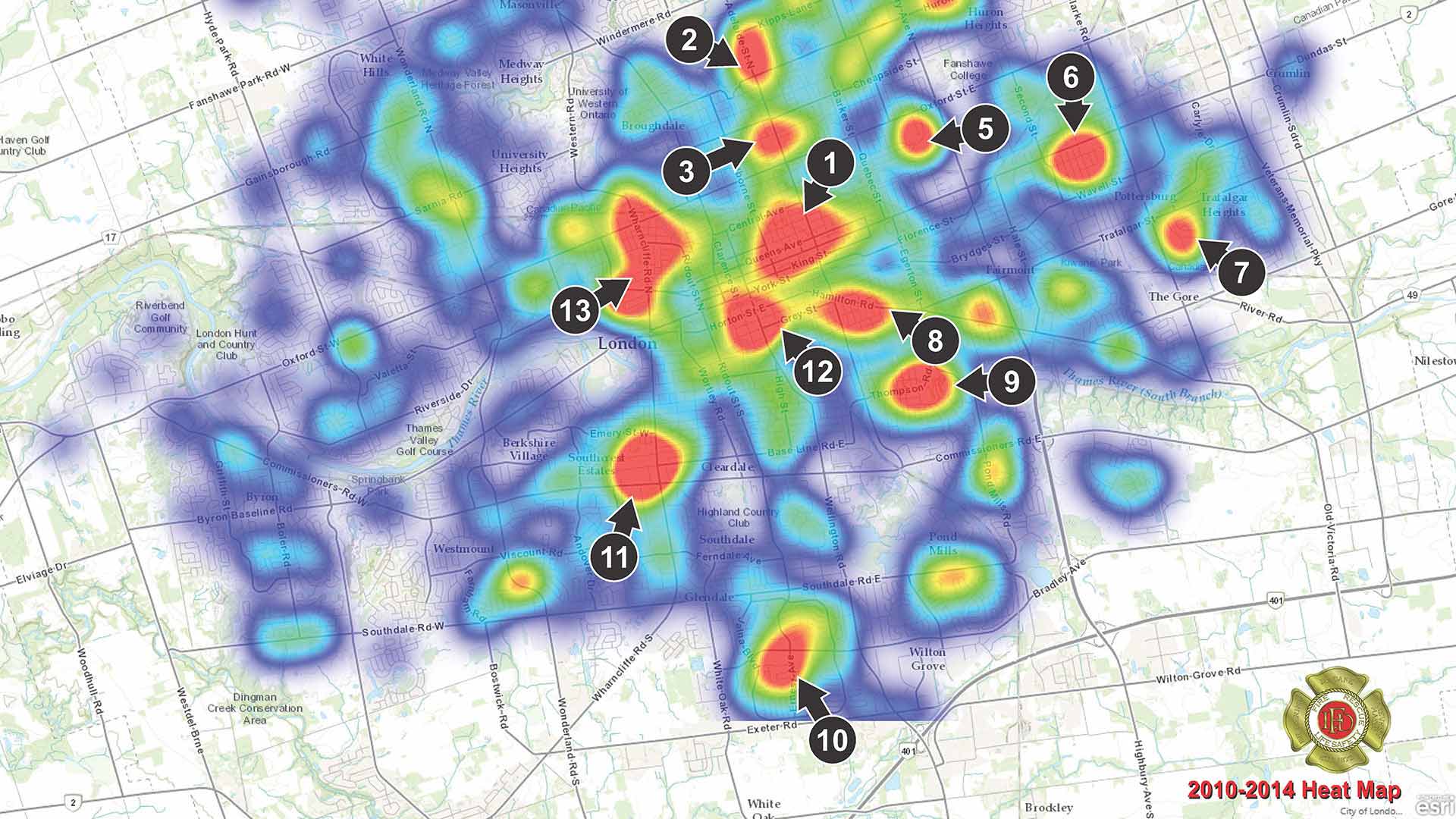In a competitive business climate, Minnesota relies on two practices to attract and retain companies: provide data that shapes investment decisions and deliver it in a way that’s easy to understand.
Minnesota Governor Tim Walz and his team have developed what he calls an executive portfolio—a collection of data-rich maps showing business executives everything from broadband capacity in Ely to youth skills programs in Minneapolis and the cost of living in Watonwan County. The technology behind this insight is a geographic information system (GIS).
At a recent tech conference, Walz explained that simple maps conveying complex information support the state’s quest for positive outcomes among businesses and residents.
Access to decision-shaping data and effective communication through GIS technology are two of the factors that have made Minnesota a top destination for business investment. It ranked sixth in CNBC’s list of the top states for business in 2024.
“The tools of GIS and the science behind this and the ability to communicate make a huge difference,” Walz said at the conference, reflecting on his time in the governor’s office.
The Right Data for Business Expansion
Economic development and business expansion are the lifeblood of a state, ensuring jobs for residents and strengthening tax revenues for communities. For a business executive, the decision of where to open or maintain operations—whether a manufacturing site, a retail store, a tech startup, or a clean energy facility—begins with data.
Business leaders considering investments in the Land of 10,000 Lakes could start by consulting the state’s executive portfolio of maps, Minnesota Jobs, Workforce, and Economy.
Through these maps, a retail planner looking for certain clientele can examine median household incomes in various counties and cities. As executives develop a short list of locations, analysts can dive deeper with AI-powered GIS, revealing the revenue each prospective store is likely to generate.
Labor availability is a key consideration for manufacturing investments. Minnesota’s maps reveal labor force participation rates across the state and pinpoint where youth training programs are creating a pipeline of potential employees for each industry.
In a state as economically diverse as Minnesota, companies are analyzing potential investments every day across a range of sectors. For a bank or mortgage lender, a homeownership map might be the first stop in planning a new office location. For a solar company, a map of clean energy jobs can reveal overlooked opportunities.
For tech startups or logistics companies dependent on mobile workers, broadband accessibility helps determine the ideal place to invest in operations. With GIS maps showing broadband access and performance metrics, Governor Walz and Minnesota’s economic development team provide decision-makers with data that is simple to interpret, even as it drives complex decisions.
High Rankings, High Data Availability
In a fast-paced, high-stakes business environment, there is no substitute for useful data communicated effectively.
At the tech conference where Governor Walz presented his GIS vision, he looked back on challenges that have shaped Minnesota in recent years.
“As governor,” he said, “the ability to use what I knew about mapping and the visual display of data to convey complex issues, to effect change among people, was really important.”
It’s likely no coincidence that a state ranked favorably in business surveys consistently delivers complex data in a package as simple as a map.
Watch Governor Walz’s full address.
The Esri Brief
Trending insights from WhereNext and other leading publicationsTrending articles

December 5, 2024 |

July 25, 2023 |

November 12, 2018 |

February 1, 2022 |

July 29, 2025 |

July 14, 2025 |





